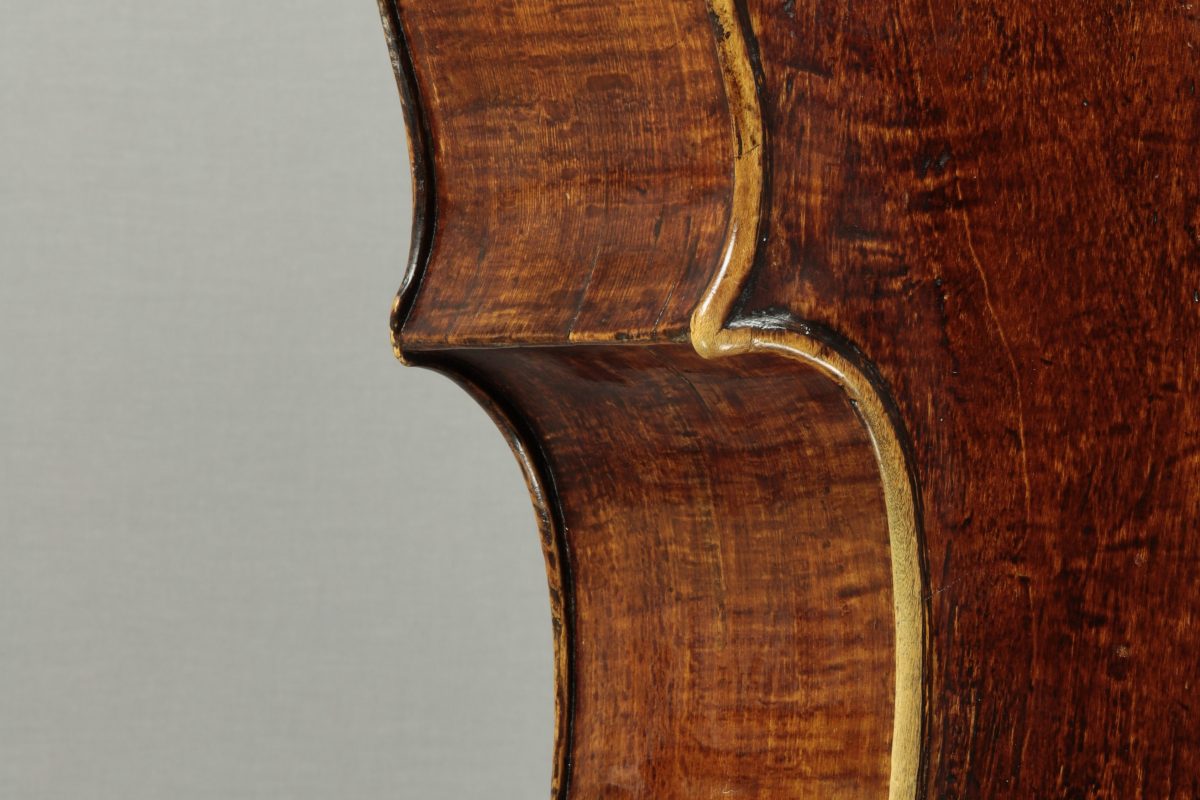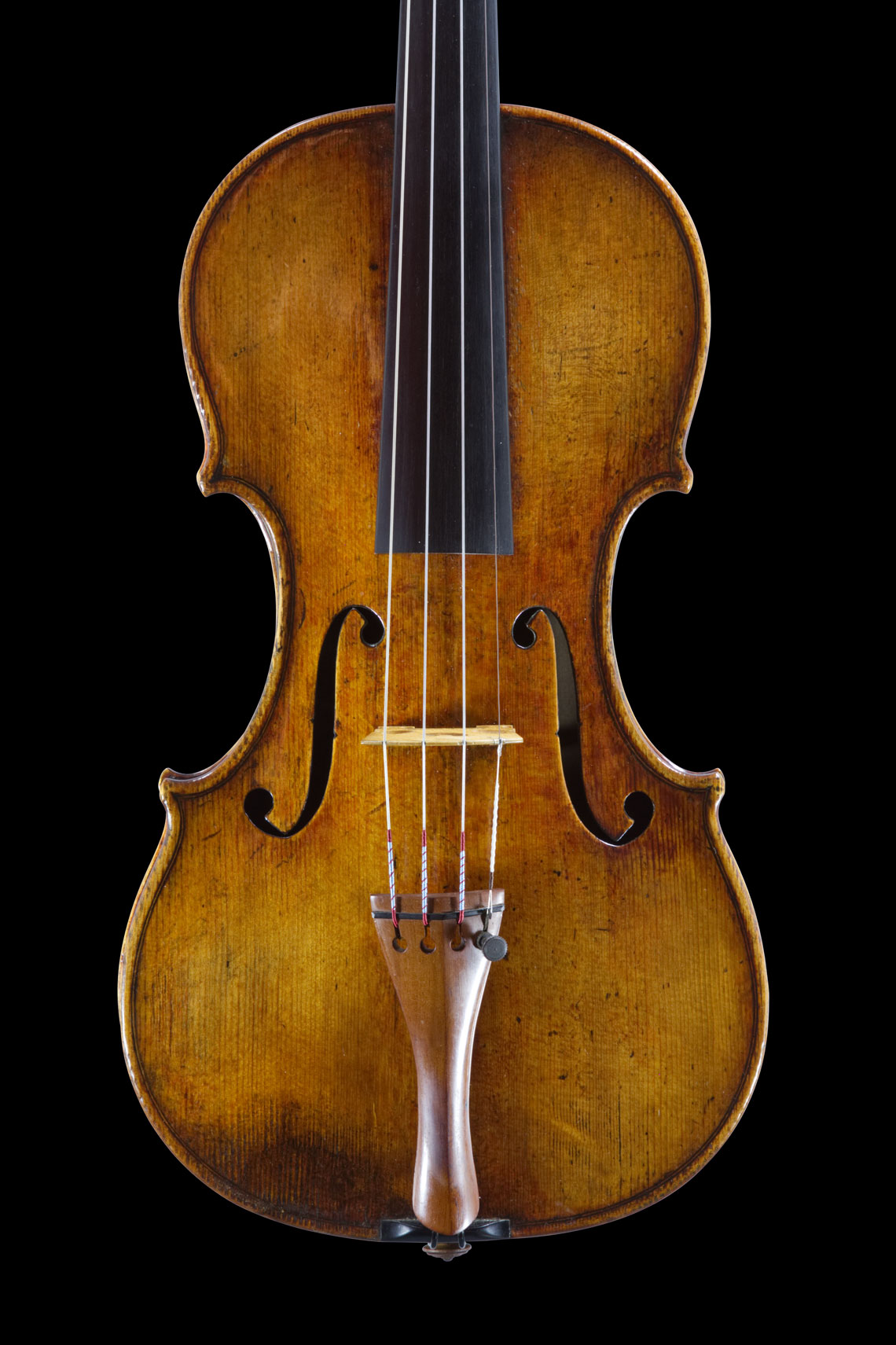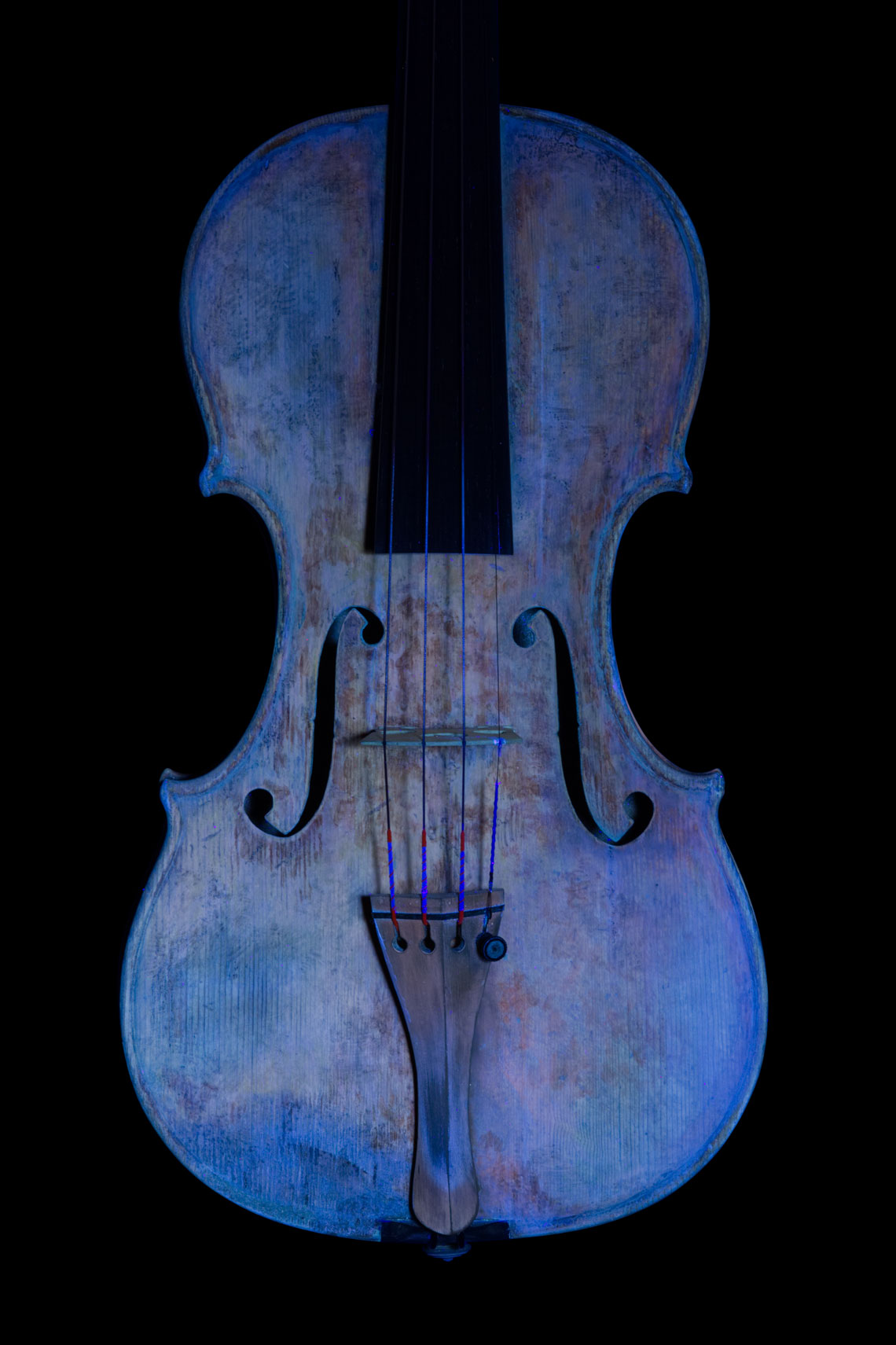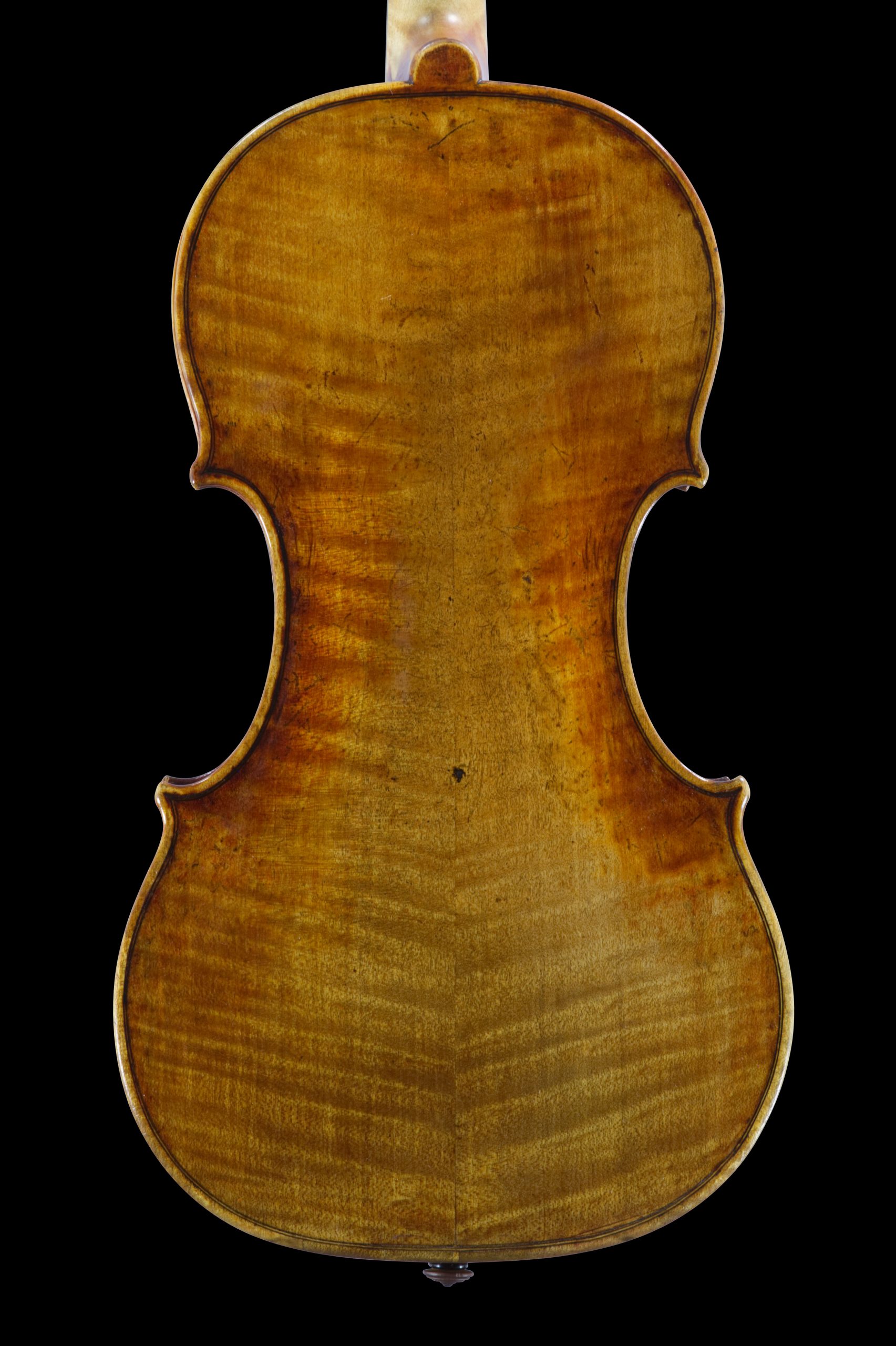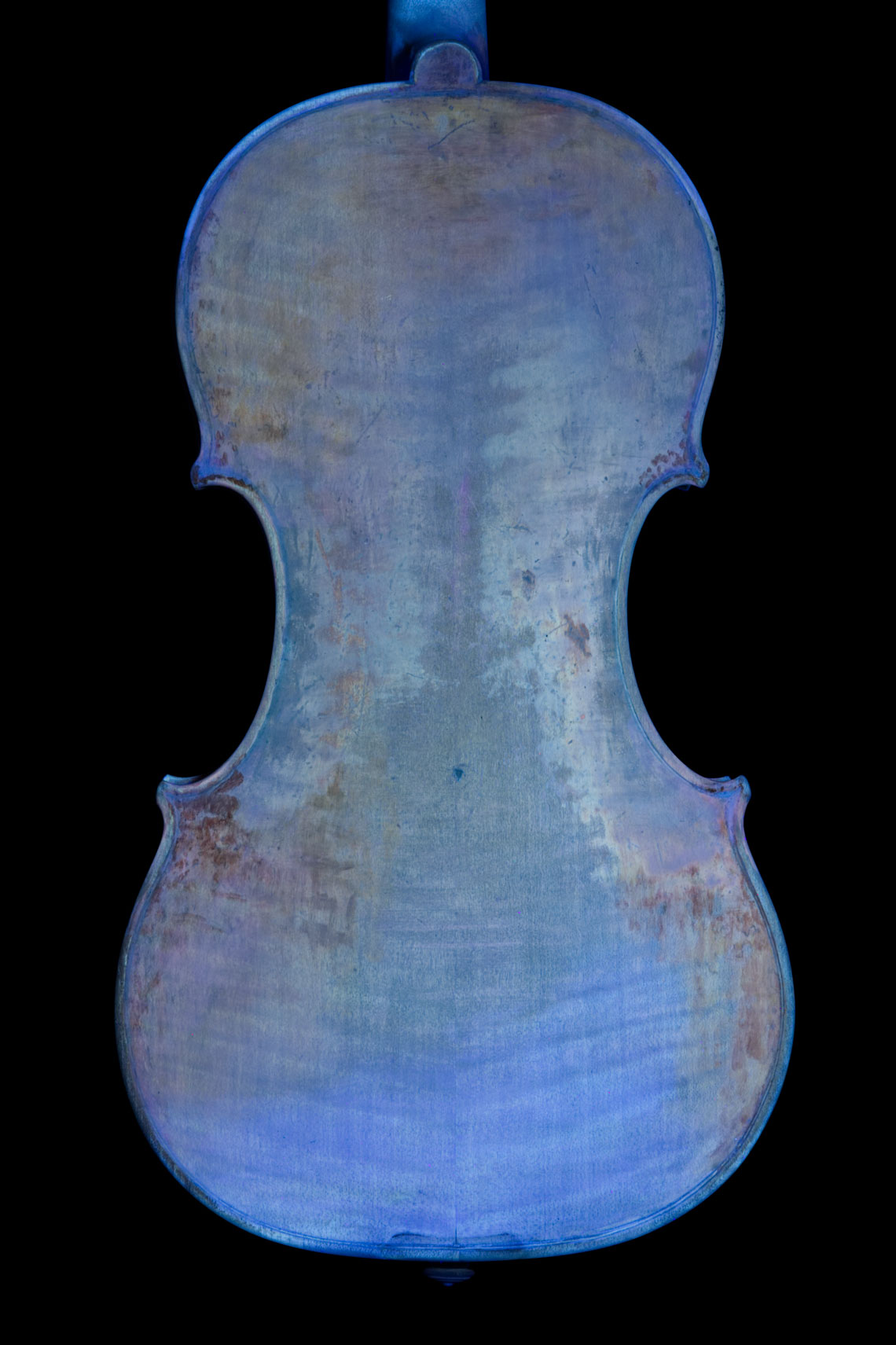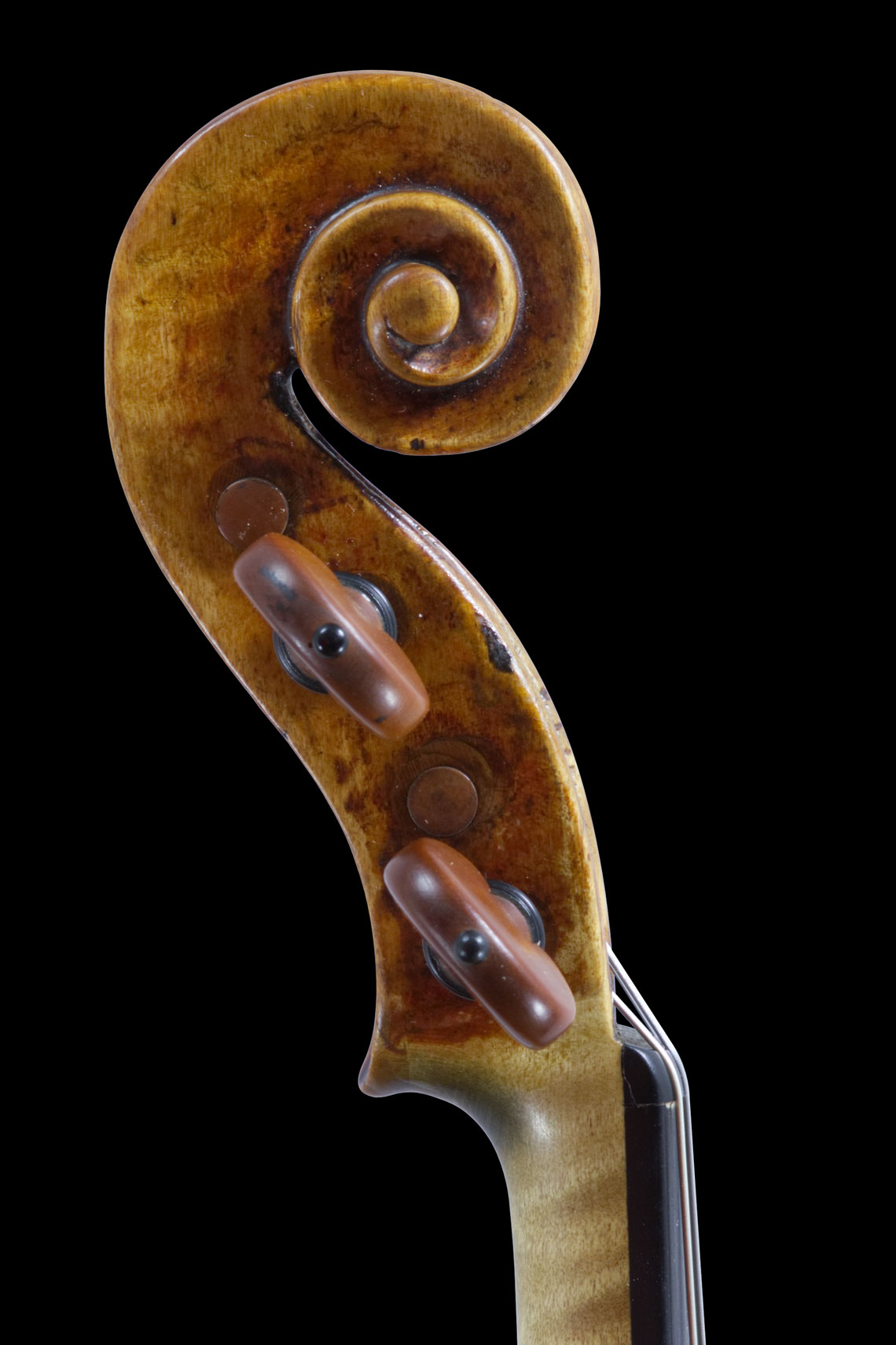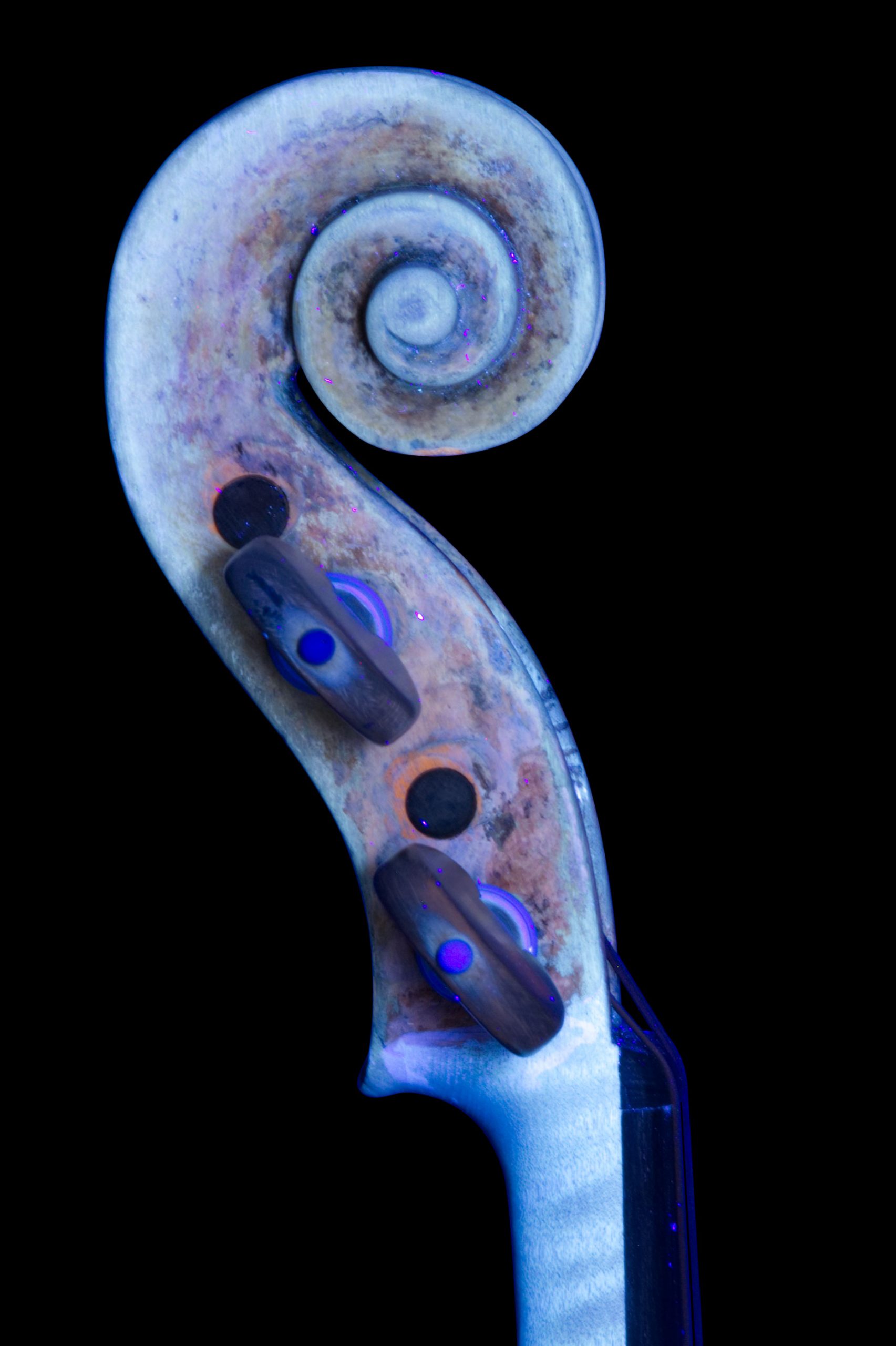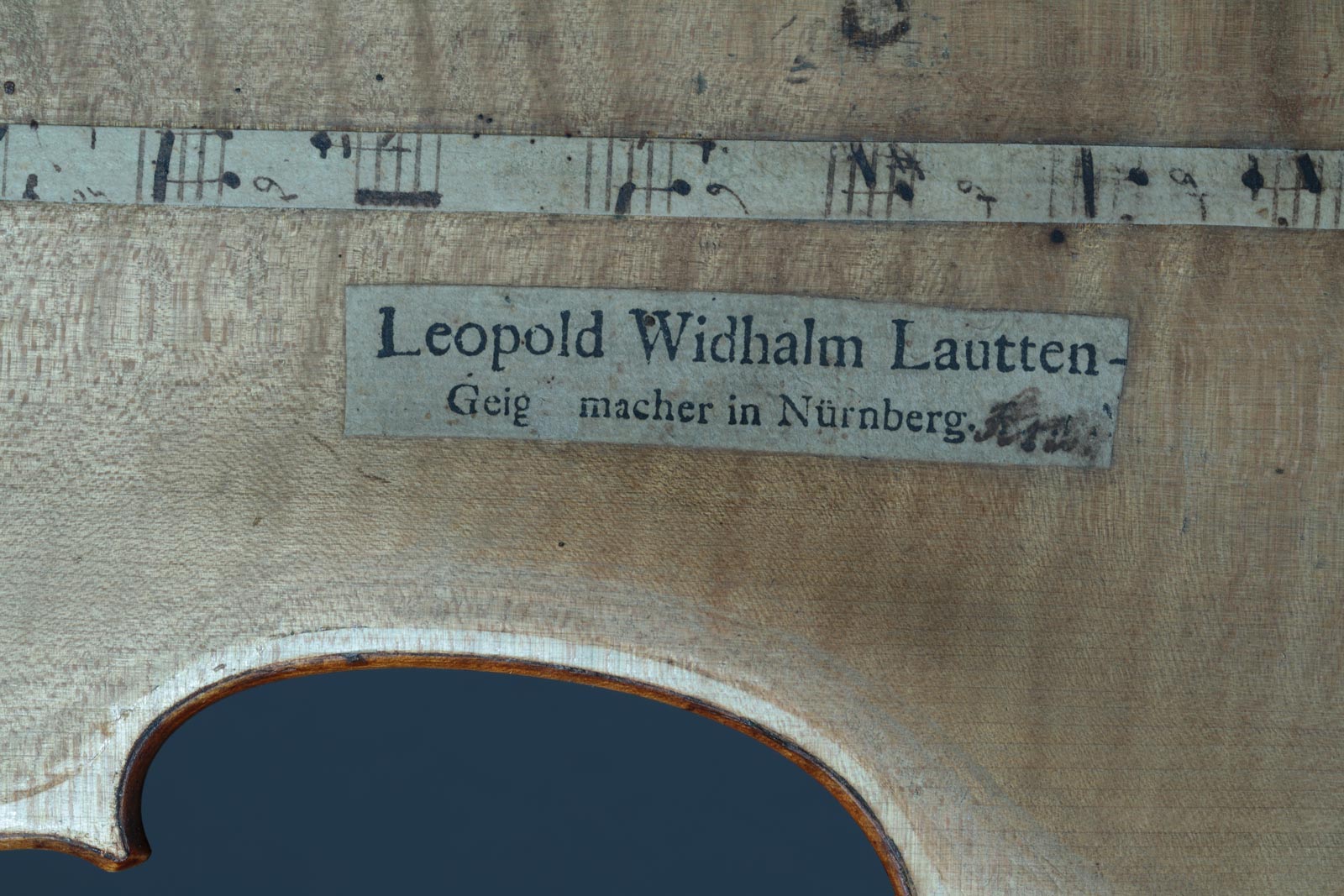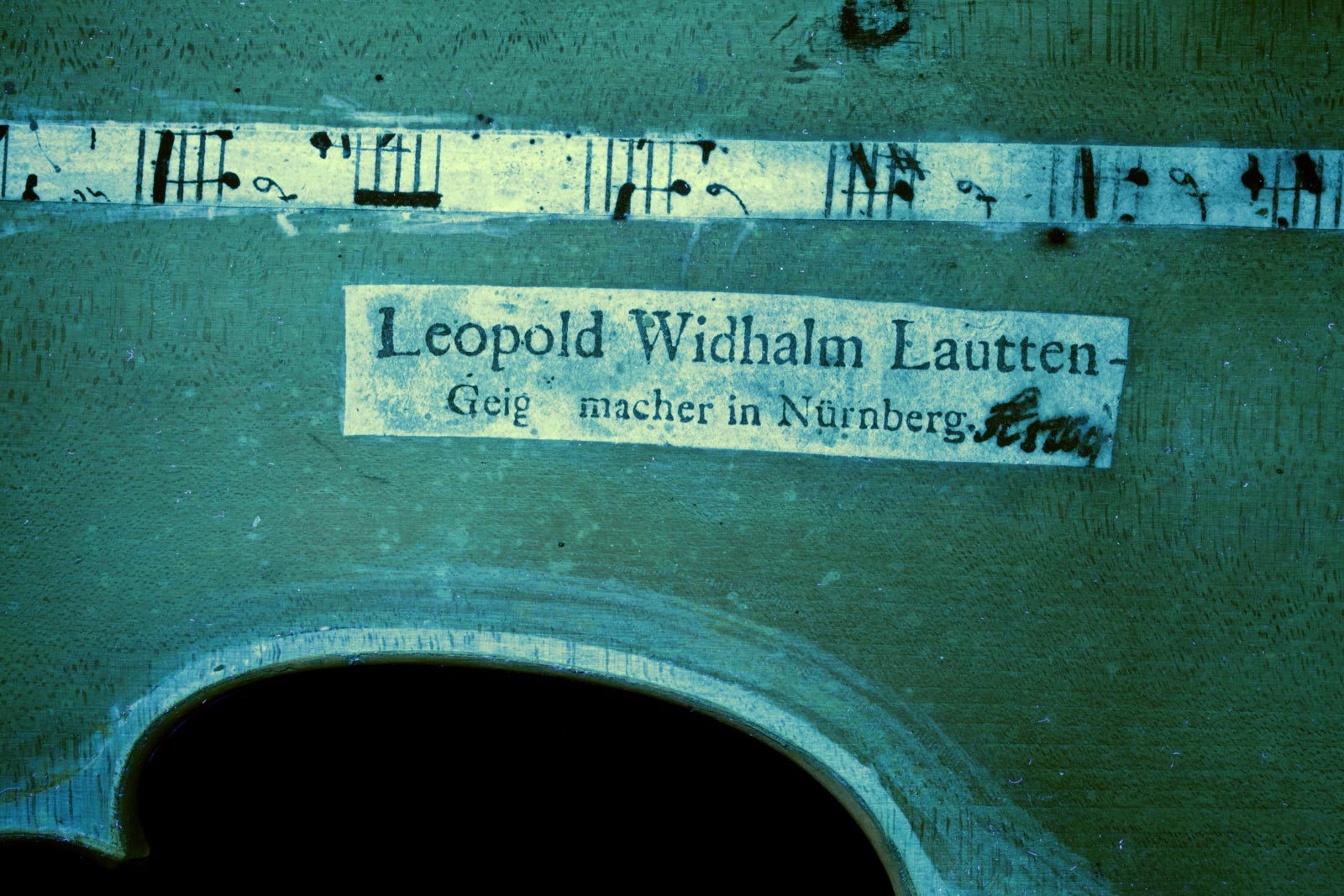Our expertise counts
In detail, we offer you:
- Certificate of Authenticity
- Condition report
- Valuation report
- Instrument Pass
- Declaration of Materials
Based on scientific methods
We do not rely solely on our know-how and experience for our expert opinions. Rather, we examine the instrument with scientific methods in order to arrive at a justified, sustainable and exact result. Depending on the type of document you want, we use UV fluorescence photography, infrared photography, endoscopy or dendrochronological analysis and also work together with internationally renowned experts. In addition, we capture all the details photographically. For this purpose, we have set up a professional photo studio in our studio.
Often not visible in normal daylight: UV fluorescence photography reveals small cracks, renewals and retouching and thus provides insights into the state of preservation of a string instrument:
Thus, in this violin made by G. Guarneri del Gesù, in addition to some cracks, retouching and polishing can be observed:
The UV fluorescence photograph also made the date 1769 visible on the label of this violin, made by Leopold Widhalm:
On the next violin made by Matthias Klotz in Mittenwald, in c. 1720, infrared imaging, ultraviolet fluoresence and high-resolution photography make damages, old repairs and retouching visible.
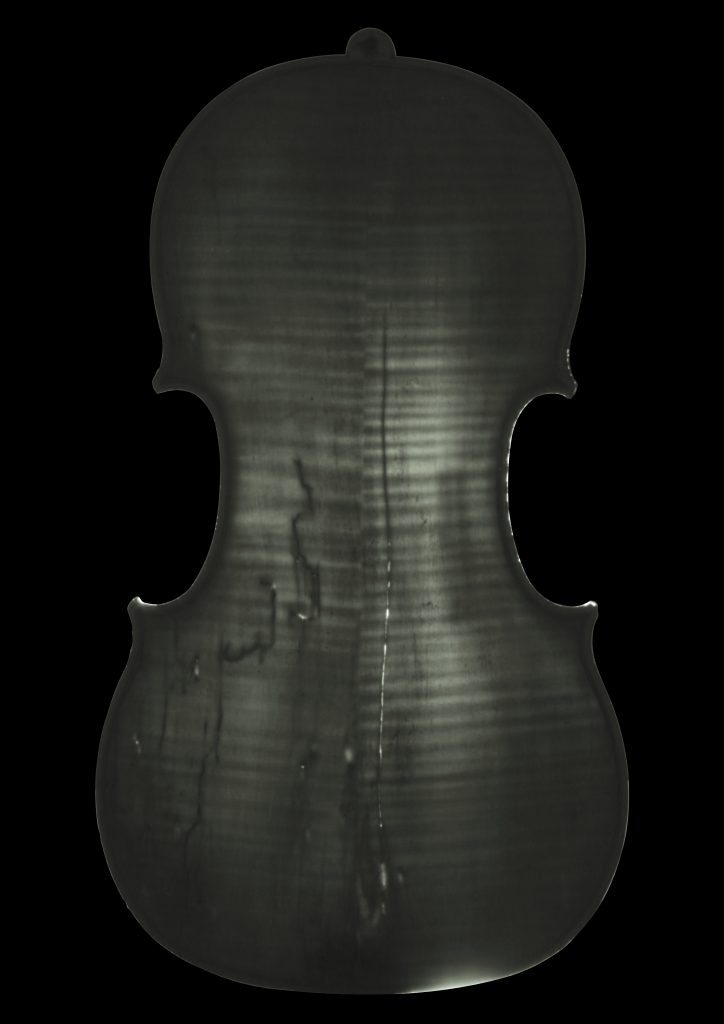
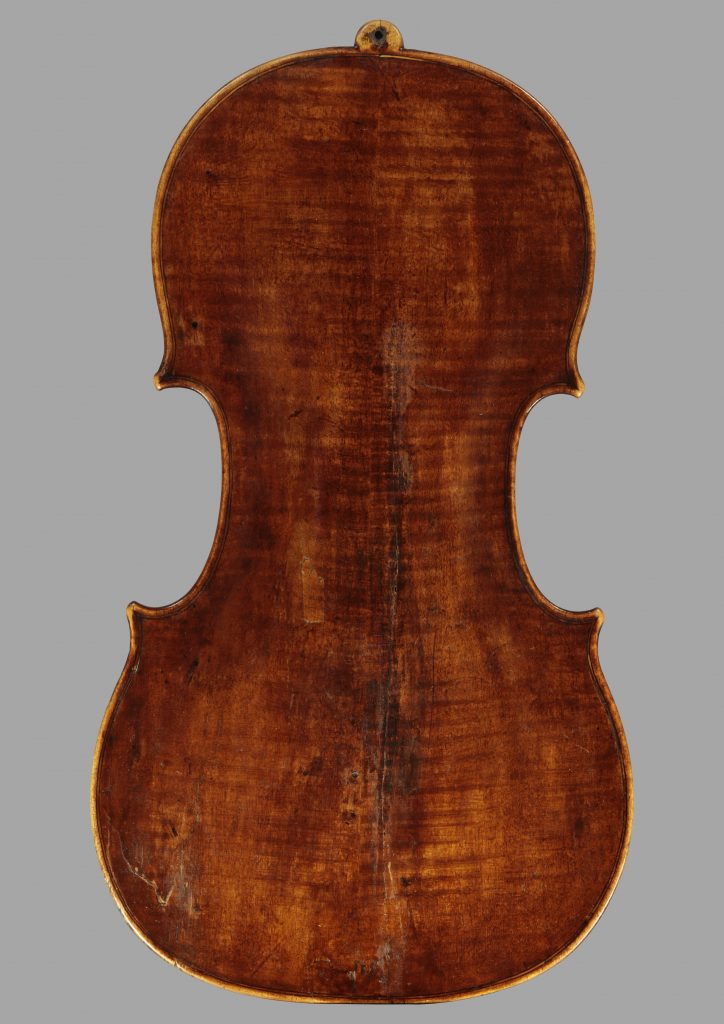
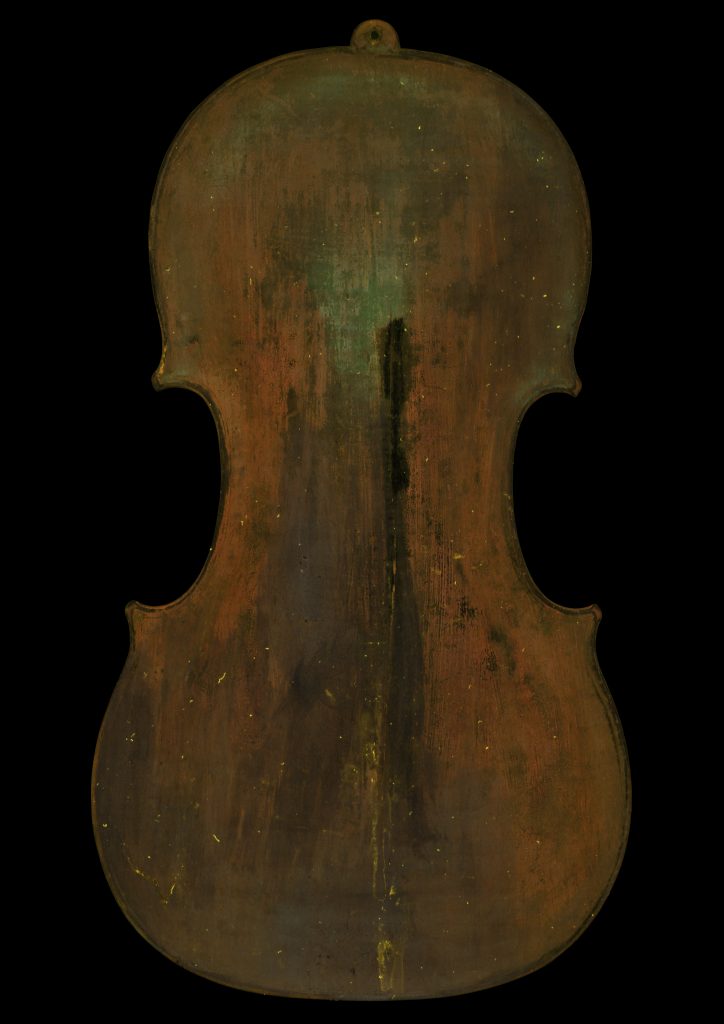
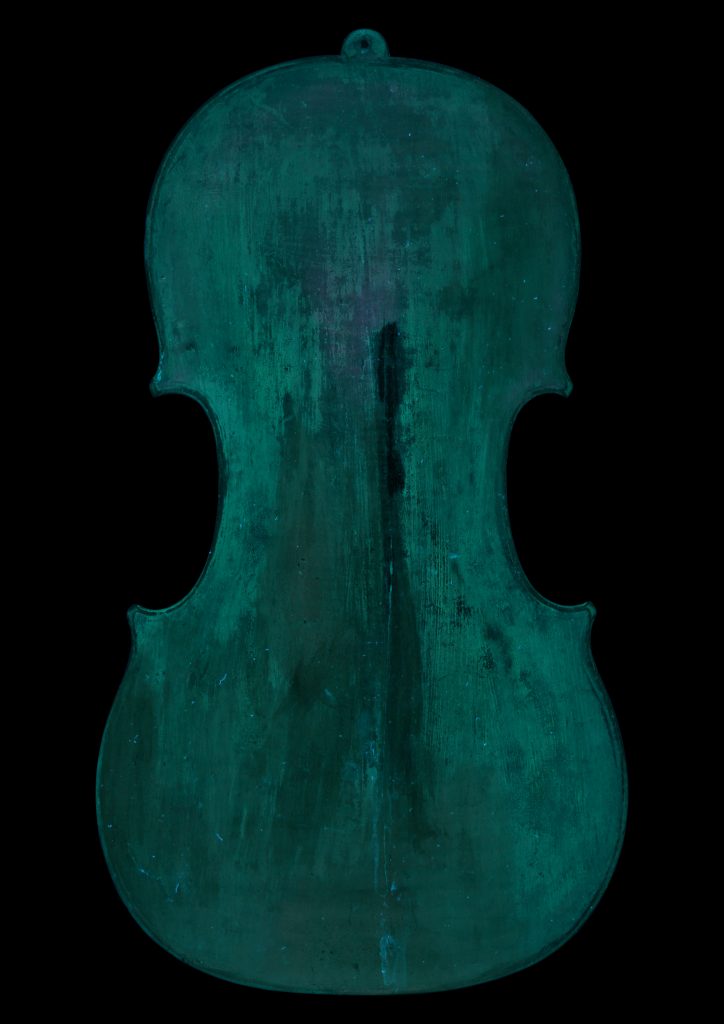
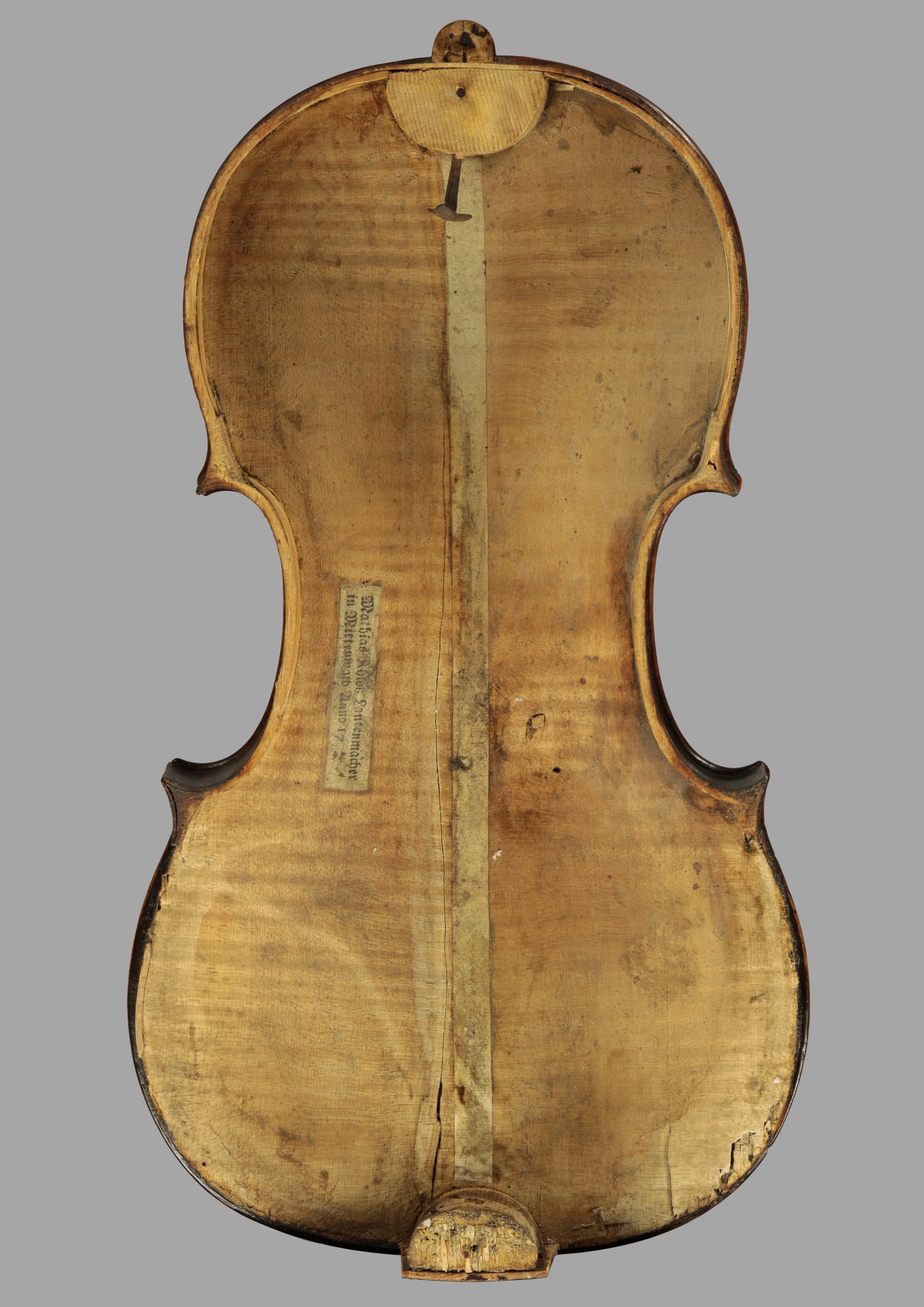
Travel worry-free
Antique string instruments and bows may be made of plant and animal materials, which are now subject to the Washington Convention on the Protection of Species and thus subject to strict trade and import regulations. Especially if you want to cross the external borders of the European Union with your instrument, we strongly recommend that you carry proof of the materials used – a so-called Declaration of Materials. We will be happy to provide you with the relevant document.
